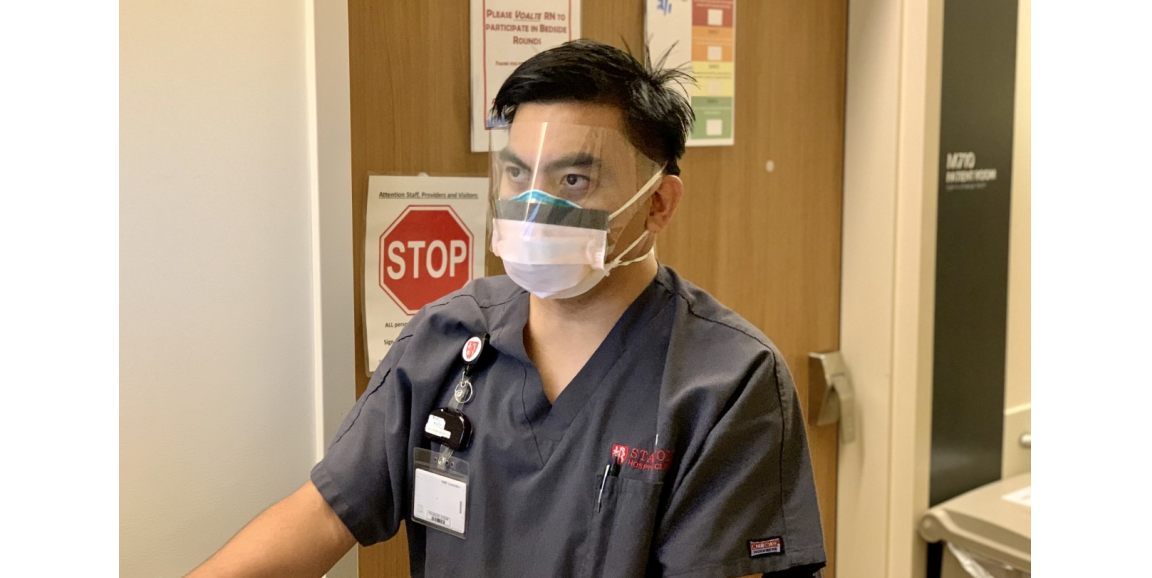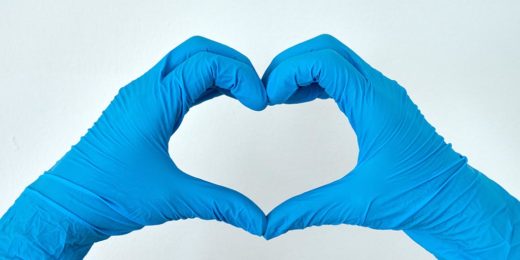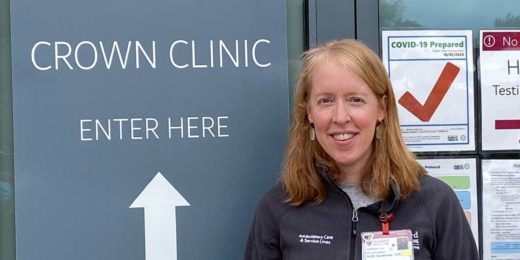Charles Ayson was working the night shift at Stanford hospital in mid-March when it was announced that the 22-bed medical unit where he worked as a nurse would be dedicated to treating patients with the contagious, sometimes deadly new disease known as COVID-19.
"I was in shock more than anything," said Ayson remembering back to that first shift at the beginning of the pandemic when the entire world seemed to suddenly upend.
To reduce contagion, family members were restricted from visiting the newly designated COVID unit, leaving the smaller staff that runs the ward during the nights responsible for so much more.
In addition to their usual tasks of delivering medicines, cleaning, washing, monitoring patients and their vital signs, the nursing team and other care providers spent time sitting at their bedside, quieting fears, and just being there for them.
On the front lines
"It was a different kind of stress than I had ever experienced in my whole life. I just couldn't get organized. By the end of the shift, I felt like I was a failure," Ayson said.
At the time, Ayson had been working as a discharge nurse on a night shift team of about 12 nurses and others treating patients with a variety of ailments from heart failure to severe infections. He had dealt with other highly infectious diseases before, but this was uncharted territory. All he could do was share the knowledge and experience he had with his team, and do his best to lead by example. So that's what he did.
"He just kind of dove straight in," said Lauran Miklosey, the nurse manager for unit M7 and Ayson's supervisor. "He was leading his team, giving them feedback on what was working. He was always there providing strong emotional support for the team. And the team has risen to the challenge. There's a kind of team spirit. It's been so powerful to see."
The first step was teaching the staff members the process of how to carefully and safely put on and take off the newly required personal protective equipment. They had to do it exactly right to keep themselves safe, their patients safe, while also protecting against bringing the virus with them when the shift ended in the early morning, and they went home to sleep.
"At first, I was absolutely terrified about bringing home the virus to my family," said Ayson who lives with his wife and their 7-year-old daughter. "But I knew I had to do my job. I was passionate about that. Fortunately the team has always had plenty of personal protective equipment. I've been so appreciative of the whole organization's support in providing all the PPE we needed."
Helping calm patients to keep them breathing
Once protected, the team could safely enter each patient's dimly lit room, but they never knew exactly what to expect.
Some patients had tested positive for the virus but had no symptoms at all. Others had no past medical history but were incredibly ill.
The team worked hard to keep each patient breathing on their own, usually through a heavy oxygen mask. They sat next to them, working to calm anxieties, telling them to just take another breath. Sometimes their patients got better, other times they had to be moved to the intensive care unit where there were put on ventilators to help keep them breathing and keep them alive.
"It is our job to help calm patients to keep them breathing and to help get them back to sleep," Ayson said. "We keep waking them up to check their vital signs." Sometimes they have to remind them why they are in the hospital, why their family can't be with them and why they need to stay in their room.
Often, they turn to technology to help patients connect with their family members.
Digital tablets and videoconferencing applications, said Ayson, "have been a fantastic way to connect patients with family. We had one elderly gentleman who was anxious and always trying to get out of bed and walk the hallways. When we couldn't calm him, we called his wife to talk to him. That always helped calm him."
When crisis mode becomes routine
At the end of each shift, the team huddles together to discuss the patients and the night's events, Ayson said. It's an important time and through these many months he's tried to bring some levity, playing harmless pranks, making his colleagues laugh.
"Sometimes I'd make up names of people on the schedule just for fun," he said. "Just to get a laugh."
And as the weeks turned into months, the team grew closer as they experienced the pandemic's ups and downs together.
"There were those periods where it would be a pretty good week. There wouldn't be a lot of new admissions and the COVID patients would be pretty stable," Ayson said. "Then there were weeks were every patient seemed to be getting worse at the same time. But the staff has been so resilient and really hard working. As much as I want to keep their spirits up, it's just really hard work. There is no way around it."
Ayson has also worked to find his own calm space when he returns home in the mornings, trying to get enough sleep, spend time with his family, and finding healthy outlets for the daily stress of the job.
"I still try to cycle, stay out in nature," he said. "That's kept me sane through this whole ordeal."
And the stress has subsided somewhat as more data has come out about the virus, its transmission and best care practices. He feels safe now at work, proud of his team's work, and hopeful due to the roll-out of the new coronavirus vaccines.
"It feels like we're seeing the light at an end of the tunnel," said Ayson who got his first vaccination in December and the second in mid-January. "That was a really great Christmas gift."
The Voices of COVID series captures the stories of the many people at Stanford Medicine who have been stepping up to the challenge of the pandemic. Follow along on social media and look for new stories regularly.
Photos by Elizabeth Borgueta






